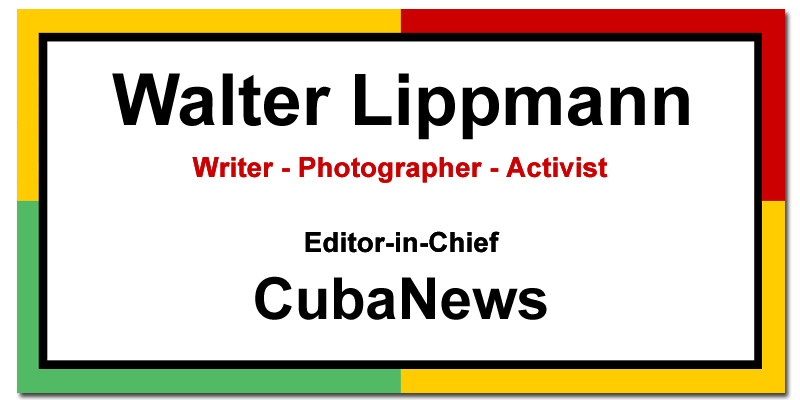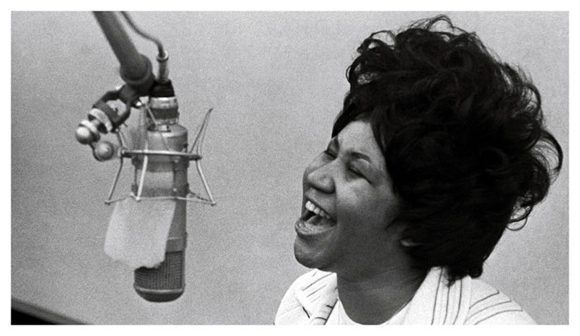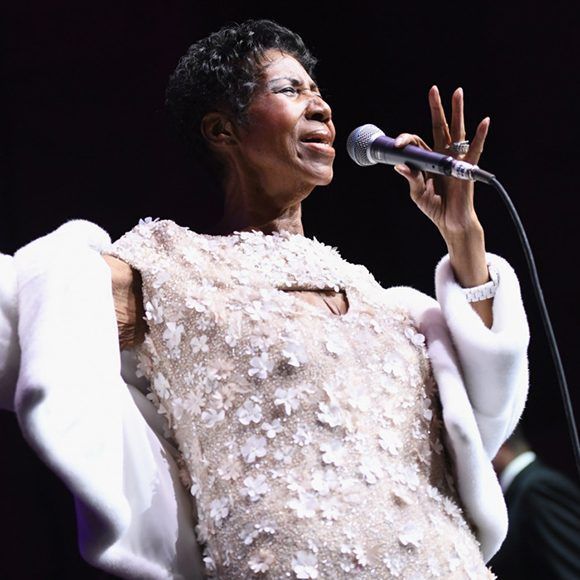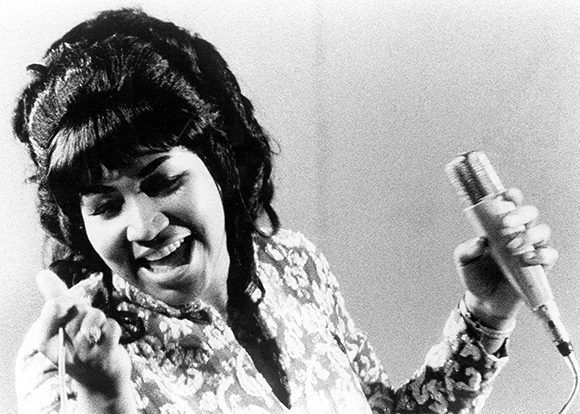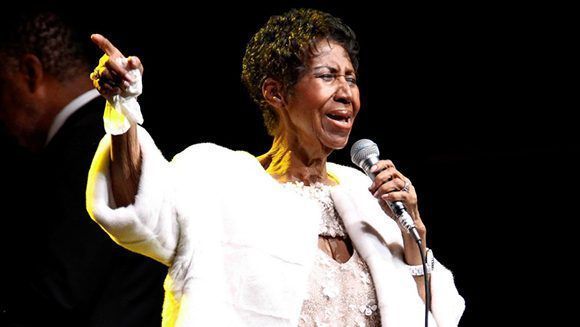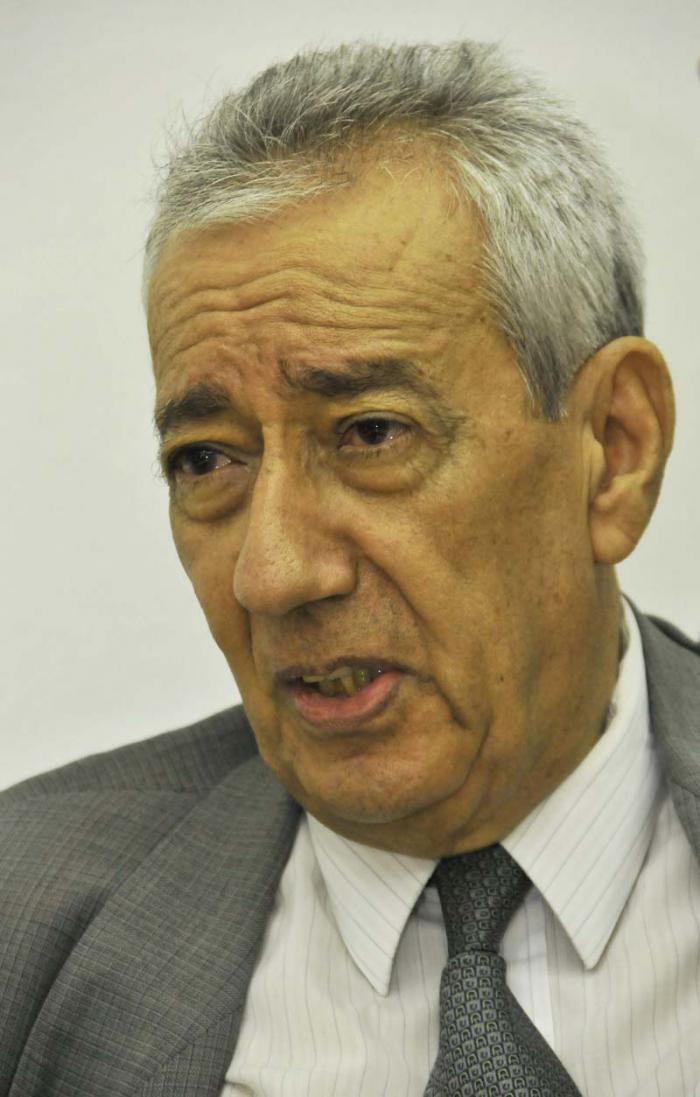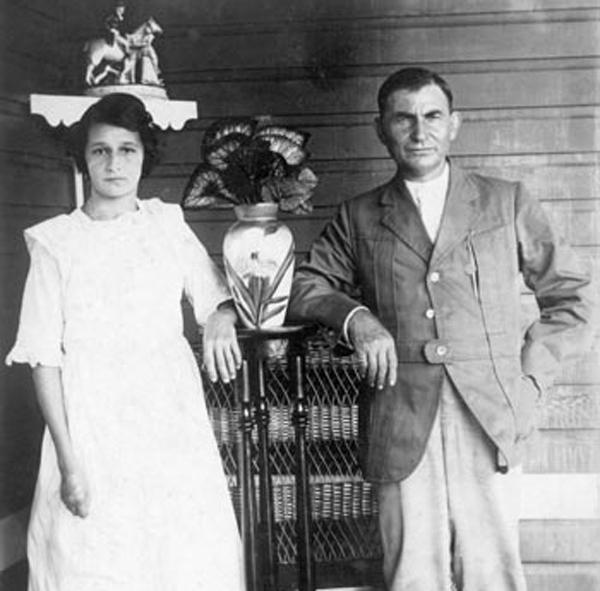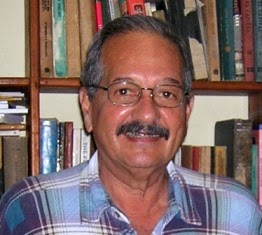Translations 677
Aretha Franklin

Aretha Franklin, the Great Queen of Soul, has died
August 16, 2018
Translated and edited by Walter Lippmann for CubaNews.
Aretha Franklin won 44 nominations, 18 Grammys and 75 million records sold
The diva from Memphis had been fighting cancer for years.
Franklin still had time to make one last record, A Brand New Me.
She went on to replace Luciano Pavarotti at the 1998 Grammy Awards.
There are few black voices left of the old guard. One of the most imposing ones has departed. Perhaps the most recognizable, the one that became immense by singing Respect and that had the pleasure of finishing off the work with other unforgettable melodies such as Natural Woman, I Say a Little Prayer or Chain of Fools, a church voice that made the leap into the commercial arena and that, after 44 nominations, 18 Grammys and 75 million records sold all over the world, became the first woman to access the Rock and Roll Hall of Fame, a year before The Beatles. The queen of soul, the eternal Aretha Franklin, has passed away. She was 76 years old.
Aretha Franklin’s representative confirmed to the Associated Press that the queen of soul had died Tuesday at her home in Detroit. On Sunday, information began to circulate about the singer’s admission to a hospital in Detroit, the city where she lived. It was said that she was in an extremely serious condition and that she was surrounded by her closest family and friends, as a clear sign of her impending end.
The Memphis diva had been struggling with cancer for years – even though she had never officially recognized it – and last year announced that she was retiring from show business for good. “This will be my last year. I’ll be recording, but this will be my last year of concerts. That’s all,” she said in an interview in 2017
“I feel very enriched and satisfied with where my career comes from and where it is.
All this after she was forced to cancel a series of concerts during the summer and could not be at a jazz festival in New Orleans. “Aretha Franklin has been ordered by her doctor to stay off the road (because of the music tours) and rest completely for the next two months,” the singer’s team announced in a statement in March.
Elton John will be able to brag about getting her on stage one last time. She was in November in New York to raise funds for the fight against AIDS. And former President Barack Obama was able to count on the strength of her voice at the 2009 presidential inauguration, in one of her most notable and remembered public events in her homeland. She did the same with Jimmy Carter and Bill Clinton, as well as singing at Martin Luther King’s funeral.
Despite her health problems – for decades she had to deal with obesity and alcoholism – Franklin still had time to record one last album, A Brand New Me, a compilation of her most important songs, although this time with the collaboration of the Royal Philharmonic Orchestra of London and the voice of a much more mature Franklin.
“Having the opportunity to work with that voice on this project has been the greatest honor and hearing a symphony orchestra involve these performances is impressive,” said producer Nick Patrick after releasing the album in November last year.
Marijuana Legalization

Marijuana Legalization:
Know the World Before You Give Yourself to It
About the International Day against Drug Abuse and Illicit Trafficking of Drugs and the growing debate over the legalization of the most widely used illicit drug in the world, Granma spoke with the renowned professor Dr. Ricardo A. Gonzalez Menendez, consultant of the service for comprehensive care of addictions at the Havana Psychiatric Hospital and Chairman of the National Medical Ethics Committee.
Author: Lisandra Fariñas Acosta | lisandra@granma.cu
June 25, 2015 23:06:32
A CubaNews translation.
Edited by Walter Lippmann.
For more than 6000 years, the world has known Cannabis sativa and the history of human consumption dates back some 5500 years. Of Asian origin, Cannabis Indicus –its common name- was used for centuries as a textile fiber and its seeds as bird feed. It is marijuana, whose effects were initially considered scarcely dangerous and therapeutically useful, which placed it in the frontline of medications thousands of years ago, but which today are recognized as catastrophic.
It seems paradoxical that in the 21st Century, “the debate over this plant and its effects resembles that of 2000 years ago, the date of Proverbs that clearly indicate divided opinions. For some, marijuana was a passport to paradise, while for others it was a plant that grew along the road to hell. It is extremely worrying that we are now at the same point, when marijuana is a hard drug which is included, along with alcohol and other substances, among the first psychoactive substances capable of significantly transforming human behavior.”
Marijuana is a hard drug which is included, together with alcohol and others, among the first psychoactive substances capable of significantly transforming human behavior.”
This reflection was given to Granma by Dr. Ricardo A. Gonzalez Menendez, consultant of the service for comprehensive care of addictions at Havana Psychiatric Hospital and Chair of the National Medical Ethics Committee when commenting on the current trend around “the ghost” of legalizing marijuana, the most widely-used illegal drug in the whole world.
With over 30 years experience in the treatment and detoxification of addicts, the professor said it was urgent to destroy myths with facts that are established science. There is enough up to date scientific information on the outbreak of schizophrenia, cognitive impairment, carcinogenicity and sudden violence caused by marijuana consumption.
“One argument that has contributed to the legalizing trend is the therapeutic properties attributed to the plant. The list of positive effects range from the attenuation of nausea and vomiting associated with cytostatic serums in cancer patients receiving chemotherapy, references to some decrease in seizure frequency and the intraocular pressure in glaucoma cases, up to analgesic effects and appetite control as well as tranquilizing action, despite being one of the drugs most associated with symptoms of acute anxiety or panic,” said the expert.
Although the macroeconomic and social impact of organized crime is indisputable, proponents of legalization, cannot, by their professional profile, assess the impact at home, work and community of the cerebral effects of this drug that blocks the rational brain and releases the more primitive structures and functions”
Precisely –he said– what happens is that for all these cases there are specific and more effective medications with the huge advantage of being much safer when applying the ethical principle of risk-benefit. “Marijuana, like tobacco, alcohol and all the hard drugs are not isolated and purified active principles, but mixtures of hundreds of chemicals with different effects, often opposite and usually harmful. From this, it follows that the use of the drug as medicine would require a pharmacological high-tech process to demonstrate, separate and produce adequate presentations for consumption, dosage and control of both positive and adverse effects. The final product would be tablets, vials or eye drops and not the absolutely anti-medical way that has been proposed for its use, which is the traditional form of illegal consumption simply growing and smoking marijuana either in the form of leaves, flowers and stems, as resin (hashish) or oil obtained through the same procedures as those used by narco producers and drug traffickers.”
The interviewee said that many honestly think that legalizing this drug is a solution –among them people with high human qualities, but with limited knowledge of the neuro-psycho-physical pathology and the personal, home and community impact of behavior modifying drugs, as well as the micro-paradigms of risk-benefit and accessibility–consumption implicit in such a measure. “They do not know the true face of drugs. Few have been able to interview a patient who feels enslaved wanting to stop using and being powerless, nor a desperate mother who has gone out with a gun to kill the seller who supplied his son, and who is a codependent, almost passive consumer hurt by the addict’s suffering.”
There is enough up-to-date scientific information on the outbreak of schizophrenia, cognitive impairment, carcinogenicity and sudden violence caused by marijuana consumption.”
For Dr. González Menéndez, the contradiction between these two tendencies is not based on lack of human values or the dubious ethics of the proponents, but in lack of knowledge. “Although the macro-economic and social impact of organized crime is indisputable, proponents of legalization cannot by their professional profile, assess the impact at home, work and community of the cerebral effects of this drug, that blocks the rational brain and frees the most primitive structures and functions. It is also naive to expect a reduction of consumption by eliminating the ”attraction of the forbidden” he remarked.
“Consuming marijuana before age 18 reduces up to 10 IQ points, and that is irreversible”
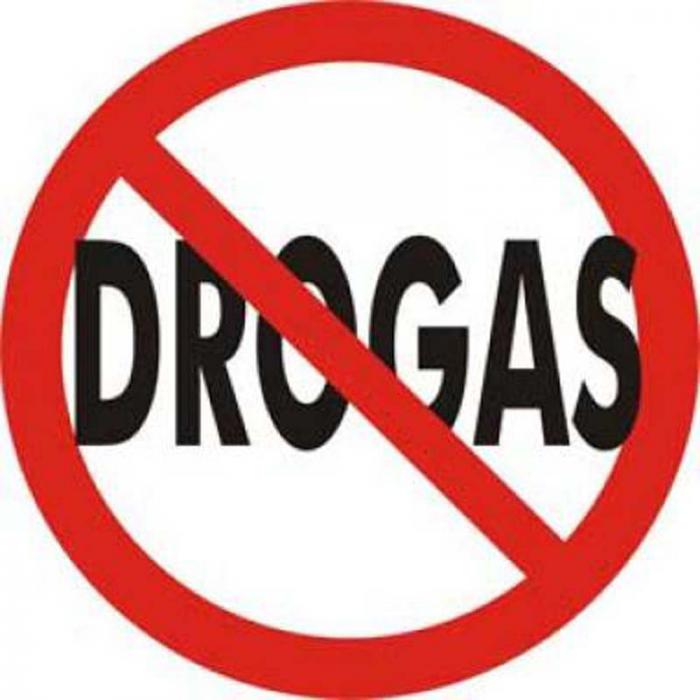 If marijuana is an illegal drug (like many others) it is not by chance but because the extensive damage it causes has been established. “The myth that it is a soft drug without determinant effects of addiction and dependency must be destroyed. Far from it, the percentage of consumers who become addicted and dependent, the little time it takes for that slavery to settle in and the great risks to determine symptoms of irreversible intellectual impairment, treatment-resistant schizophrenia, cannibalistic behaviors and cancer manifestations make marijuana quite hard and destructive drug which can by no means be underestimated. It produces moderate dementia with memory and learning difficulties in adolescents, especially those who began to consume early,” he said.
If marijuana is an illegal drug (like many others) it is not by chance but because the extensive damage it causes has been established. “The myth that it is a soft drug without determinant effects of addiction and dependency must be destroyed. Far from it, the percentage of consumers who become addicted and dependent, the little time it takes for that slavery to settle in and the great risks to determine symptoms of irreversible intellectual impairment, treatment-resistant schizophrenia, cannibalistic behaviors and cancer manifestations make marijuana quite hard and destructive drug which can by no means be underestimated. It produces moderate dementia with memory and learning difficulties in adolescents, especially those who began to consume early,” he said.
Professor González Menéndez argues that in today’s science, it is irrefutable what happens in the brain of a human being under the influence of these drugs. “Drugs that modify behavior in a relevant way, that is, from alcohol on, have immediate effects. In mid- and long terms, when consumption is addictive and prolonged, they cause impulsive and irrational instinctive-affective behaviors that are exclusive to animals. This has very little to do with the humanism, ethics and spirituality that everyone expects. “
It is marijuana –even more than the non-social use of alcohol– the true prototype of the “Russian roulette” metaphor in which no one can know for sure when the bullet will fall into the chamber; and when that happens, the effects are usually fatal
“The misuse of these substances implies a profound moral degradation, with the potential to become chronic in the individual case, but it has a generalization potential that would turn it into a macro-social phenomenon of very high relevance, because, when sober, our behavior is cognitive, volitional, rational and controlled. This also brings down the belief that marijuana does not generate violence or criminality. “
The history of these 6000 years of living with marijuana has given exemplary lessons.
Clinical and research experience shows that the much-propagandized ‘consumer placidity’ often and unpredictably is transformed into extreme violence. Therefore, marijuana –even more than the non-social use of alcohol– is the true prototype of the “Russian roulette” metaphor: no one can know with certainty when the bullet falls into the chamber, and when this happens, the effects are usually fatal.
LEARNING FROM SCIENCE AND HISTORY
The history of these 6000 years of living with marijuana has given exemplary lessons. Our interviewee remembers that in the early eighteenth century there was an English doctor, O’Shaughnessy, who traveled to India and returned amazed at marijuana’s analgesic properties. He was so enthusiastic that with his influence he managed to get marijuana introduced in the pharmacopoeia of his country. This trend reached the United States. A decade later, England declared it was a mistake to have this substance (“a product with so many dangers”) in their list of medications. A few years later, the United States eliminated it and subsequently, India did the same.
Finally, since 1971, the use of cannabis was controlled through the “Illicit Drugs Act” which prohibited the medical use of both the weed and its active constituents. Its nefarious actions on the human body had eclipsed its possible medical uses. This criterion was emphatically endorsed by the World Health Organization (WHO) in 1997, recognizing that cannabis adversely affects mental health.
The legalization of marijuana is far from being an accurate blow to drug trafficking, and so, as organized crime, how long would it take to replace and compensate the product for other designer drugs?
Physician Jacques Moreau, quoted by Escohotado, had described in 1973 his experiences resulting from the self-administration of an infusion of Sativa Cannabis flowers. He described eight main symptoms observed under the influence of the substance: “Unexplained feelings of happiness, dissociation of ideas, errors in assessing time and space, exacerbation of hearing, fixed ideas, disturbance of emotions, irresistible impulses and delusions or hallucinations”. He suggested that, in some cases, the intoxication caused by this drug could be considered a pattern of psychiatric illness.
The idea that ending the ban would end the lure of the forbidden, and reduce consumption, is absolutely anti-historic. The specialist says that it would be enough to remember London in 1751 when a phenomenon called the gin epidemic inspired Hogarth’s Gin Alley engraving. The work is expressive of the catastrophic effects derived from a certain overproduction of grains diverted to the production of the most genuine and legal drink of the time in that country. A 90% reduction of gin’s price created a flood of eager buyers who –as shown in the engraving– committed every imaginable crime. The consumption of this drink was multiplied by more than five and the tragedy transpired to this day.
Dr. González Menéndez says the legalization of marijuana is far from being a real blow to drug trafficking because organized crime would soon replace the product and compensate with other designer drugs. Can we ignore the consequent risk of a chain of effects that in the long run would make us face the dilemma of having to legalize all drugs, and the resulting immediate extinction of the human species?
The specialist says that the trend –defended by many on the grounds of the right of each person to choose how to live their lives– imposes a reflection: “Doesn’t that right end where the rights of others begin? And what about the cost to the family, and bystanders who die in traffic accidents due to marijuana or other drugs such as ecstasy? Isn’t legalization of marijuana a first step, by necessity consistent with the promotional efforts of health and healthy lifestyles, the promotion of moral values, of prevention of disease and crime, as well as the creation of a better world? Can we thus achieve cultures of higher spirituality, and dismissive of the consumption of substances that degrade our biological, psychological, social and cultural well-being? Can the problem of drug abuse be solved by legalizing consumption without creating truly effective multi-sector systems for the care and comprehensive solution of the multiple effects of drug abuse?”
We live in a world where young people tend to experiment. We fear legalization will determine most unfavorable results once the drug is free from family, school and community censure –together with the higher addictive nature of marijuana compared to alcohol.
Tobacco and alcohol should have taught us something. If with only two legal drugs in the world we lose more than nine million lives each year, do we need another legal drug? Drugs –that do not respect anything, not age or gender, or skin color or culture, ideology, sexual preference or philosophical position– open the doors to more drugs. The success of anti-drug programs depends on our awareness that these toxic substances are a system of substances that associate and reinforce their actions. This demands the indispensable confrontation with all its categories. We must remember the universal principle that the greater the access, the greater the consumption.
http://www.granma.cu/cuba/2015-06-25/conoce-el-mundo-antes-de-darte-a-el
Development without drugs
According to the World Drug Report 2014, the use of these substances continues to cause considerable damage, reflected in the loss of valuable lives and the productive years of many people.
Author: Lisandra Fariñas Acosta | lisandra@granma.cu
June 26, 2015 00:06:46
This new International Day against Drug Abuse and Illicit Trafficking -–a day that humanity celebrates every June 26– is dedicated to development for our lives, our communities, and our identity in a world without drugs.
This date established by the United Nations General Assembly in 1987, serves to remind the target agreed by the Member States of the United Nations to create an international society where drugs are not misused. According to the World Drug Report 2014, the use of these substances continues to cause considerable damage, reflected in the loss of valuable lives and the productive years of many people.
“In 2012 an approximate total of 183 000 drug-related deaths were reported (variation margin 95 000-226 000). That figure corresponds to a mortality rate of 40,0 (variation margin: 20.8 to 49.3) deaths per million in the population between 15 and 64 years,” refers the document.
Although this calculation is less than 2011 figures; this reduction can be attributed to the lower number of deaths reported by some countries in Asia.
According to the statistics in this global report it is estimated that in 2012 between 162 and 324 million people, i.e. 3.5% to 7.0% of the population between 15 and 64 years, consumed illicit drugs – mainly cannabis group substances, opium derivatives, cocaine and amphetamine-type stimulants– at least once.
This Friday, June 26, the United Nations reminds everyone that we all have a role to play in protecting youth from dangerous substances.
http://www.granma.cu/cuba/2015-06-26/desarrollo-sin-drogas
United Nations Secretary-General Ban Ki-moon:
Message on International Day
against Drug Abuse and Illicit Trafficking
26 June 2015
VIENNA, 26 June (UN Information Service) – In September, leaders from around the world will meet at the United Nations to adopt an ambitious new sustainable development agenda to eradicate extreme poverty and provide a life of dignity for all. This ambition, while achievable, must address various obstacles, including the deadly harm to communities and individuals caused by drug trafficking and drug abuse.
Our shared response to this challenge is founded on the international drug control conventions. In full compliance with human rights standards and norms, the United Nations advocates a careful re-balancing of the international policy on controlled drugs. We must consider alternatives to the criminalization and incarceration of people who use drugs and focus criminal justice efforts on those involved in supply. We should increase the focus on public health, prevention, treatment and care, as well as on economic, social and cultural strategies.
We must address the nexus between illicit drugs and violence, corruption and terrorism. A balanced approach recognizes the close connections between those who traffic in drugs and criminal networks involved in firearms smuggling, kidnapping, human trafficking and other crimes. This work must also include redoubling efforts to prevent the supply of the precursor chemicals that are the foundation of so many illicit drugs.
Promoting international cooperation through the UN conventions on transnational organized crime and corruption is essential to addressing today’s security and development challenges. No criminal should escape justice. The balanced approach calls for unity of purpose within the international community, including the UN, civil society and, most importantly, the world’s nations. No country can work in isolation. Comprehensive and integrated efforts at the local, regional and global levels offer the best hope for dealing with the traffickers, while taking care to protect vulnerable groups and marginalized communities.
Efforts against illicit drugs must be connected to our work to promote opportunities through equitable and sustainable development. We must continually strive to make the weak and fragile stronger. The United Nations General Assembly special session on the world drug problem, to be held in April 2016, can advance this cause, with countries sharing knowledge and forging common solutions.
On the International Day Against Drug Abuse and Illicit Trafficking, let us raise awareness about the value of applying a balanced approach to these problems based on an understanding that sustainable development can and must catalyze change across all these fronts.
Original print edition in PDF:
http://www.granma.cu/file/pdf/2015/06/26/G_2015062604.pdf
http://www.granma.cu/file/pdf/2015/06/26/G_2015062605.pdf
Fidel Castro on his mother Lina

Lina
“Tell me about your mother”, was the request of journalist Ignacio Ramonet to Fidel
————————————————————————————————————
Author: Fidel Castro Ruz | internet@granma.cu
August 12, 2018 18:08:16
A CubaNews translation.
Edited by Walter Lippmann.
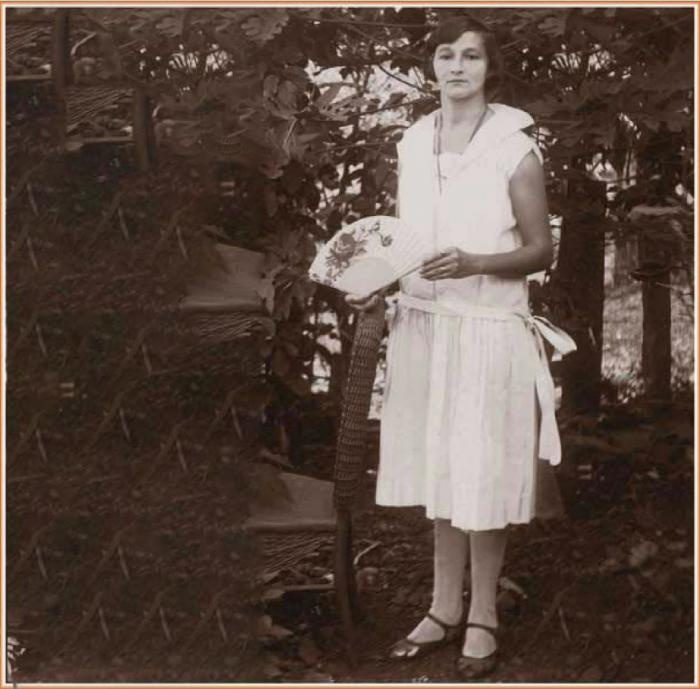
Extraordinarily hardworking, there was no detail that escaped her observation, Fidel said of his mother. Photo: Office of Historical Affairs
She brought into the world seven children, all born in that house, always assisted by a rural midwife. There was never and could never be a doctor there, it did not exist in all that remote region. No one tried so hard to get her children to study, she wanted for them what she didn’t have. Without her, I, who always felt the pleasure of studying, would still be functionally illiterate today. My mother, even if she didn’t say it every minute, loved her children. She had character, she was brave and self-sacrificing. He knew how to bear with integrity and without hesitation the sufferings that some of us involuntarily caused her.
She accepted the Agrarian Reform and the distribution of those lands, which she undoubtedly loved, without bitterness.
Extremely religious in her faith and beliefs, which I have always respected, she found comfort in her sorrow as a mother, and she also accepted with motherly love the Revolution for which she suffered so much, without having had the slightest possibility of knowing the history of humanity and the deepest causes that the events she experienced so closely in Cuba and in the world originated, due to her origin as a humble poor peasant woman.
She died on August 6, 1963, three and a half years after the triumph of the Revolution.
Beauty at Any Cost?

Beauty at Any Cost?
The alarm is triggered when health risks are evident when taking on styles and habits that are, far from guaranteeing beauty, touching us with danger.
 By Ana María Domínguez Cruz
By Ana María Domínguez Cruz
digital@juventudrebelde.cu
Posted: Tuesday 07 August 2018 | 09:06:12 PM
A CubaNews translation.
Edited by Walter Lippmann.
When it comes to a haircut, a bold nail polish or a bold piece of clothing, it’s not as worrisome, because of the ephemeral nature of fashion, in the end. The alarm is triggered when health risks are evident when assuming styles and habits that far from guaranteeing beauty, touch us with danger.

Beauty, idealized perfection, belonging to a social group that makes them feel accepted, respected and proud are pursued. Author: Twitter Posted: 07/08/2018 | 08:42 pm
Several blogs dedicated to fashion and pseudo beauty, as well as photos, have multiplied in social networks, promoting a series of aesthetic fashions, based on extreme thinness and non-professional criteria. Examples: the bikini bridge, thigh gap, diastema, belly-button challenge and ab-crack, among others.
During the summer, in particular, the fashion of slimming the belly until the rubber on the bottom of the bikini becomes so tight between the hips has spread so far. The textile piece then forms a bridge over the navel that can only be achieved when adolescent girls practice arbitrary diets without any balance or with excessive fasting periods.
When we talk about a thigh gap, it is because we also test our body’s strength by trying to make the upper part of the thighs so firm and thin that it leaves a clear space between them and the pubic area. Specialists warn that this is very dangerous, because, to obtain this separation of the calves from their inner faces, depends on the anatomy of the hips and not on the amount of muscle or fat in the leg, girls often resort to anorexic behaviors that put their nutritional needs at risk.
The furrow of separation between the two muscles of the abdomen in a well-marked way is another tendency between adolescents and adults, called the “ab-crack”. They do not take into account the risk of obsessive hyper-musculation from unbalanced protein intake, or in some cases, from abuse of vitamin supplements and other less-desirable substances.
As if that weren’t enough, there are plenty of images on Instagram and Facebook of teenagers who want to show off their slender bodies, running one arm behind their backs to try to touch their bellybuttons with their hands, while with their other hand they take on a selfie. The belly button challenge also certainly flirts with dangerous diets and eating disorders, as does the so-called collarbone challenge, another challenge for teenagers who want to demonstrate that they can fit a string of coins in the gap between their collarbone and their neck.
For both the female and male sexes, the diastema is now spreading as a fashion, which is nothing more than the search for the separation of the upper denture into two halves after a widening of the central teeth. It is then valued to undergo an expensive dental operation to wear what is not naturally available.
In the area of cosmetic surgery, we note with concern the fact that some teenagers between the ages of 13 and 16 want to undergo labiaplasty, an aesthetic operation that seeks to resize the vaginal lips and leave them shorter, more even or more turgid.
The followers of this surgery for aesthetic purposes consider preventive reasons regarding hygiene or pain when having sexual intercourse, as well as psychological reasons when the lips are asymmetrical and when sexual acceptance and self-esteem disorders are associated, but what is alarming is that this type of operation is not recommended before the age of 18, since the vaginal lips during adolescence are in full growth phase.
Also not without risks, and also associated with high prices is the pubic lifting, another practice used by girls and boys who want to attract more from a sexual point of view to their partners. They are exposed to lightening the adipose tissue of the Mount of Venus in women and the lower abdomen in men to rejuvenate the urogenital area.
How many wrong associations with beauty! Imitating aesthetic models that are far removed from what is healthy only shows the vulnerabilities that those who do not feel completely satisfied with their physique and way of being suffer during adolescence.
It is a complex period in life, say psychologists and sociologists, because adolescents need to build their identity and value the opinion that others have of them. However, this is the best time to alert them to the health consequences of certain behaviors and, above all, to the importance of accepting themselves and cultivating what may be invisible to the eyes, but which is ultimately the most valuable.
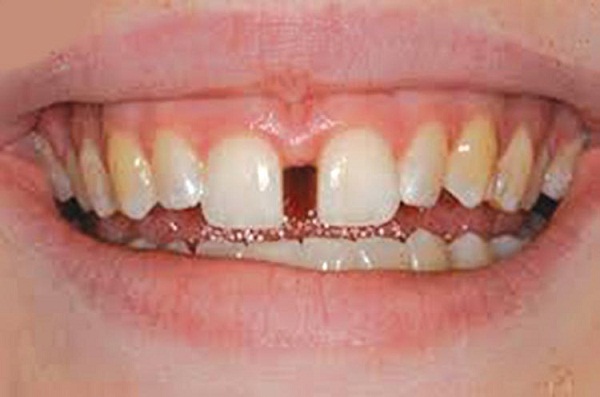
Diastema: In search of the unnatural separation of the teeth the person undergoes the risks of dental surgery.

Ab-crack: Teens do not take into account the risk of obsessive hypermusculation from unbalanced protein intake.
Spike Lee wants Trump to see “BlacKkKlansman”

Director Spike Lee wants Donald Trump to see his movie “BlacKkKlansman”
Translated and edited by Walter Lippmann for CubaNews.
Spike Lee expects Trump to see “BlacKkklansman”, his film about the Ku Klux Klan, a passionate film, with moments of tension and comedy about race relations in the United States over the decades.
“BlacKkkKlansman,” based on the true story of an African-American police detective in the 1970s who infiltrated the Ku Klux Klan, hits theaters on Friday.
Lee said the film’s release is specifically scheduled to commemorate the anniversary of last year’s violent clashes between white nationalists and anti-racist protesters in Charlottesville, Virginia, in which a woman was killed.
Trump was heavily criticized last year for blaming both sides for the violence, and images of the protests are included in the film.
“I want the man in the White House to see it too. I’m not saying his name,” Lee told Reuters Television Wednesday at the film’s Beverly Hills premiere.
“When I saw the horrific act of national and American terrorism, I knew right away that I wanted to do this,” Lee said of what happened in Charlottesville.
Topher Grace, who plays David Duke – leader of the Ku Klux Klan of the 1970s – said the cast and crew were impressed by the film’s contemporary relevance during shooting.
“It becomes more timely with each passing second, unfortunately. This film should not be more timely now than it was when the events occurred, but unfortunately it is,” Grace said.
(With information from Reuters)
Cuba hands over US citizen

Cuba hands over US citizen sought by Interpol
Translated and edited by Walter Lippmann for CubaNews.
On 9 August 2018, the Cuban government handed over to authorities of the United States government in Havana the US citizen Joseph Mahmoud Dibee, who was wanted by the US justice system for crimes committed there, and who is also facing an Interpol arrest warrant with a Red Alert. This citizen entered the national territory on 31 July 2018.
This action is based on Cuba’s strict compliance with its international legal obligations and existing bilateral agreements with the United States on compliance and enforcement, and the cooperation that both Governments are developing on that front.
Interpol Red Alerts refer to persons who are under search of national jurisdictions. It provides for the arrest or provisional detention of persons wanted for extradition. The legal basis for issuing a Red Alert Order is the arrest warrant or court decision issued by the judicial authorities of the country concerned.
Joseph Mahmoud Dibee, 50, who is accused by a court in Portland, Oregon, of conspiracy and arson for a series of incidents that took place in the 1990s and 2000s, according to the FBI file, was internationally circulated by Interpol.
(With Information from Cubaminrex and agencies.)
Cuba hands over US citizen sought by Interpol

Cuba hands over US citizen sought by Interpol
On Thursday, August 9, the Government of Cuba handed over to the authorities of the United States government the US citizen Joseph Mahmoud Dibee, who is wanted by the US justice system and who is also subject to an Interpol arrest warrant with a Red Alert.
———————————————————
The Government of Cuba handed over to U.S. government authorities on Thursday, August 9, the U.S. citizen Joseph Mahmoud Dibee, who is wanted by the U.S. justice system and who is the subject of an Interpol arrest warrant with a Red Alert, the daily Juventud Rebelde reports.
Author: Digital Editor | internet@granma.cu
August 11, 2018 10:08:20
Information published on the CubaMinrex website of the Ministry of Foreign Affairs of Cuba details the following:
On 9 August 2018, the Cuban government handed over to United States government authorities in Havana a US citizen wanted by the US justice system for crimes committed there, who is also facing an Interpol arrest warrant with a Red Alert. This citizen entered the national territory on July 31, 2018.
This action is based on Cuba’s strict compliance with its international legal obligations and existing bilateral agreements with the United States on compliance and enforcement, and the cooperation that both Governments are developing on that front.
Interpol’s Red Alerts refer to people who are being sought by national jurisdictions. What it stipulates is the arrest or provisional arrest of the persons sought for extradition. The legal basis for issuing a Red Alert order is the arrest warrant or judicial decision issued by the judicial authorities of the interested country.
Chucho Valdés album dedicated to his father

Chucho Valdés will release an album dedicated to his father
Chucho Valdés: I dedicate the album to my father because this year is the centenary of his birth, he was the first one to insert the batá drums in a Big Band, creating the so-called batanga rhythm.
By Juventud Rebelde
digital@juventudrebelde.cu
Posted: Thursday August 9, 2018 | 12:39:36 PM
A CubaNews translation.
Edited by Walter Lippmann.
Cuban jazzman Jesús “Chucho” Valdésut confirmed on Wednesday that he will release the album Jazz Batá II, a recording dedicated to his father, also a jazzman, Bebo Valdés, in October.
“I dedicate the album to my father because this year it is the centenary of his birth. He was the first to insert the batá drums in a Big Band, thus creating the so-called batanga rhythm”, said the multi-awarded pianist in a press conference, according to PL.
One of the songs I include in the recording, he said, “I played it when I was a kid, and many years later I played it for him and I didn’t remember it, I called it 100 years of Bebo.
Another new development from the Cuban jazz musician is the project “Chucho en buena compañía” (Chucho in good company), a series of concerts that he will offer in August each year, starting in 2019, in Havana with special guests.
It will be something special, he said, and I already have plans to start with Wynton Marsalis, Herbie Hancock, and Chick Corea, said the winner of six Grammy Awards and three Latin Grammy Awards.
Valdés is in the capital of the island to present in concert the album “Once. Concierto para dos”, which he recorded with the Argentine singer Patricia Sosa.
Both of them will take to the stage of the Gran Teatro de La Habana “Alicia Alonso” on Saturday, August 11 to perform the songs on the album. The Cuban will also present solo themes, and with a special character they will share a few themes with Omara Portuondo.
Where do Assassins Come From?
- English
- Español

Where do Assassins Come From?
The imam who inspired the Orlando assassin was a homophobic ex-Marine and former FBI agent
14 June 2016 22:36:33 CDT
Translated and edited by Walter Lippmann for CubaNews.
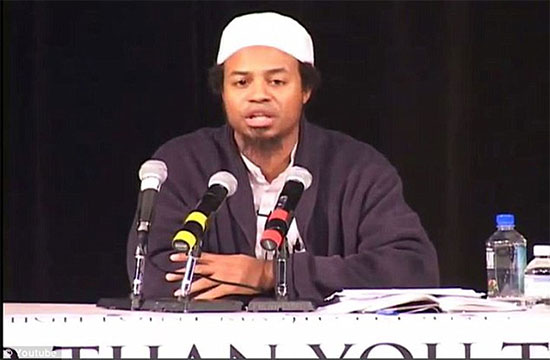 Marcus Dwayne Robertson was undercover FBI agent for 15 years.
Marcus Dwayne Robertson was undercover FBI agent for 15 years.
Author: dailymail
WASHINGTON, June 14.- Omar Mateen, Orlando’s killer, was a follower of Marcus Dwayne Robertson, a former imam who preached hatred of homosexuals.
Robertson, 47, has a past that raises more than one question about the effectiveness of U.S. intelligence controls of suspected terrorists, ANSA said.
The imam, who was allegedly interrogated Sunday along with other colleagues, has been known to law enforcement since 1991, when he was first arrested, Foxnews reported.
This is an American ex-marine who later became the leader of a New York gang known as Ali Baba and the 40 thieves, considered responsible for robbing more than ten banks, post offices and houses, as well as shooting three policemen.
At that time Robertson served as a bodyguard for Omar Abdel Rahman, known as “The Blind Sheik,” who led the terrorist group that attacked the World Trade Center in 1993.
But after his arrest, along with others in the gang, the plaintiff reached an agreement with Robertson: a sentence of only four years in prison, before working as an undercover agent for the FBI to document terrorist plans and networks in Africa, Egypt and the United States.
In 2011, Marcus was re-arrested and sentenced to four years for fiscal fraud and violation of the weapons law: his goal was to pay for a Mauritanian student’s trip to teach him how to be a terrorist.
The prosecution asked to add another ten years for his links to terrorism, but district judge Gregory Presnell released him last year.
During his detention he was confined to solitary confinement because he was suspected of having radicalized at least 36 prisoners.
Robertson launched a seminar on Islam, via the Internet: a spiritual school frequented by Omar Mateen that may not have been the only source of inspiration for the author of the Orlando massacre.
In fact, Mateen was in the Islamic center of Fort Pierce with Imam Shafig Rahman two days before the attack, according to The Washington Post.
This mosque was also frequented by Monar Abu Salha, also known as Al-Amriky (the American), considered the first with that nationality to commit a suicide bombing in Idlib, Syria, in 2014, as a militant of a group linked to al-Qaeda.
Mateen and Abu Salha knew each other and this relationship led the FBI to interrogate the former in 2014, though without judicial follow-up.
Imam Rahman confirmed that Omar “prayed in the mosque three or four times a week” and took part in the evening ceremonies, recently even “with his little son”.
Orlando’s killer was not very sociable: “Once the prayer was over, he left, he didn’t socialize with anyone. He never seemed like a violent person,” Rahman said.

¿De dónde vienen los asesinos?
Un homofóbico exmarine y exagente del FBI, el imán que inspiró al asesino de Orlando
 Marcus Dwayne Robertson fue agente encubierto del FBI durante 15 años.
Marcus Dwayne Robertson fue agente encubierto del FBI durante 15 años.
Autor: dailymail
Juventud Rebelde
digital@juventudrebelde.cu
14 de Junio del 2016 22:36:33 CDT
WASHINGTON, junio 14.— Omar Mateen, el asesino de Orlando, era seguidor de Marcus Dwayne Robertson, un exmarine devenido imán, que predicaba el odio contra los homosexuales.
Robertson, de 47 años, tiene un pasado que plantea más de una interrogante sobre la eficacia de los controles a sospechosos de terrorismo por parte de los servicios de inteligencia estadounidenses, dijo ANSA.
El imán, quien habría sido interrogado el domingo junto a otros colegas, es conocido por las fuerzas del orden desde 1991, cuando fue arrestado por primera vez, informó Foxnews.
Se trata de un exmarine estadounidense quien luego se convirtió en jefe de una banda de Nueva York, conocida como Alí Babá y los 40 ladrones, considerada responsable de haber robado más de diez bancos, oficinas postales y casas, además de haber disparado contra tres policías.
En aquella época Robertson se desempeñó como guardaespaldas de Omar Abdel Rahman, conocido como «El Jeque Ciego», quien guió al grupo terrorista que atacó al World Trade Center, en 1993.
Pero tras su arresto, junto a otros de la banda, la parte demandante alcanzó un acuerdo con Robertson: una pena de solo cuatro años de cárcel, antes de trabajar como agente encubierto para el FBI para documentar planes y redes terroristas en África, Egipto y Estados Unidos.
En 2011, Marcus fue arrestado nuevamente y condenado a cuatro años por fraudes fiscales y violación de la ley de armas: su objetivo era pagar el viaje de un estudiante de Mauritania para instruirlo como terrorista.
La acusación pidió agregar otros diez años por sus vínculos con el terrorismo, pero el juez distrital Gregory Presnell lo dejó en libertad el año pasado.
Durante su detención estuvo confinado a aislamiento porque era sospechoso de haber radicalizado al menos a 36 encarcelados.
Robertson lanzó un seminario sobre el Islam, vía Internet: escuela espiritual frecuentada por Omar Mateen y que podría no haber sido la única fuente de inspiración del autor de la masacre de Orlando.
De hecho, Mateen estaba en el centro islámico de Fort Pierce junto al imán Shafig Rahman, dos días antes del atentado, según informó el diario The Washington Post.
Esa mezquita era también frecuentada por Monar Abu Salha, conocido también como Al-Amriky (El estadounidense), considerado el primero con esa nacionalidad en cometer un atentado suicida en Idlib, Siria, en 2014, como militante de un grupo ligado a Al Qaeda.
Mateen y Abu Salha se conocían y esta relación llevó al FBI a interrogar al primero en 2014, aunque sin seguimiento judicial.
El imán Rahman confirmó que Omar «rezaba en la mezquita tres o cuatro veces a la semana» y formaba parte de las ceremonias nocturnas, recientemente incluso «con su pequeño hijo».
El asesino de Orlando no era muy sociable: «Una vez finalizada la plegaria se iba, no socializaba con nadie. Nunca pareció una persona violenta», relató Rahman.
Why Three Popes in Twenty Years?
Why Three Popes in Twenty Years?

By Manuel E. Yepe
http://manuelyepe.wordpress.com/
Exclusive for the daily POR ESTO! of Merida, Mexico.
Translated and edited by Walter Lippmann.
In less than twenty years, three Popes have visited Cuba. This is something really surprising when you consider that this archipelago is a country geographically and demographically small, and has a relatively small number of Catholics compared to other nations of Latin America.
After four centuries of colonialism –during which the official religion, with total exclusivity, was Catholicism– an “independent” republic emerged in Cuba under the protection and control of the United States. During that republican period, Cuban society, in fact, maintained Catholicism as its main religion for the first half of the 20th Century.
Although the 1902 and 1940 constitutions stipulated the separation between church and state, their texts identified Christian morality as the ethical rule for society. This was to the detriment of any other non-Christian morality and thus ignored the cultural, moral and religious diversity required in such a plural community in terms of ethnicities, religions and traditions.
The process of formation of the Cuban nationality, the struggle for independence from Spain, and the successive stages in building an independent national project as is the current socialist society, have been characterized by a secular orientation… anticlerical to some extent. This does not mean that religion was absent from the motivations of the patriots, but the objectives have always been formulated on secular foundations.
The first time the separation of church and state was proclaimed as a constitutional principle in Cuba was during the Republic in Arms [during the 19th Century war for independence] when Cubans were fighting the colonial regimes of Spain … and Catholicism.
Relations between the Catholic Church and the Revolutionary Government –which took power in 1959 after a bloody struggle against the dictatorship of Fulgencio Batista– have gone through big challenges and tense moments.
The social transformations generated by the revolution and the development of its independent and socialist project had great impact on the process of demystification of nature. Because of its character, which renewed traditions, customs and culture in general, the revolution had a secularizing effect on society.
The legislative actions and practices of the revolution, such as the law for nationalization of education, limited the social space of the Catholic religion in Cuba, and extended it to others, such as the Spiritualists, those associated with African religions, and the Pentecostals. All these managed access to public spaces to which they had very little access previously, because of the Christian and Catholic religious monopoly.
Just remember that before 1959, the Cuban Criminal Legislation included as an aggravating factor the practice of brujeria
(witchcraft), the term with which the predominant Christian culture identified those religions originated in Africa, that were widespread in Cuba, especially among the poorest sectors.
In 1991, the Fourth Congress of the Communist Party of Cuba corrected sectarian errors committed in the heat of the initial clashes. It modified its statutes and declared itself as a secular non-atheist organization. It also eliminated admission barriers in the political organization for people with religious beliefs.
As a result of this, in the midst of a situation of apparent contraction of the social space of religion, the Cuban revolution created the basic legal and social conditions for a genuine religious pluralism, without confessional or institutional distinction; as well as for something that had never existed before in the country and which few nations can boast of having: a genuine religious freedom.
Admittedly, after some initial negative episodes promoted by the strong influence of Pope Pius XII and the Fascist ideas of some Spanish priests inserted in the Cuban Catholic hierarchy, the Vatican has promoted a very constructive policy in its relations with Cuba
But the current positive practice did not start as a result of the visit of Pope John Paul II in 1998 –as some have written several times– but after the Second Vatican Council (1962-1965). On this, it is fair to acknowledge as essential, the role of the then newly appointed Apostolic Nuncio in Havana, Archbishop Cesare Zacchi, today considered the “Architect of peace between church and state in Cuba.”
The impressive popular and official welcome offered to Pope Francis in Havana seems to confirm forecasts that Latin America and the humble peoples of the world can count on the moral and ethical support of this charismatic guide of Catholicism who is willing to clean and thoroughly renew the image of his Church, bringing it closer to the Poor.
Now that US elites want to turn back history in the Latin American countries which are in the process of liberation from the domination by the North, this support could be really transcendental.
September 19, 2015.
| M | T | W | T | F | S | S |
|---|---|---|---|---|---|---|
| 1 | 2 | 3 | 4 | 5 | 6 | |
| 7 | 8 | 9 | 10 | 11 | 12 | 13 |
| 14 | 15 | 16 | 17 | 18 | 19 | 20 |
| 21 | 22 | 23 | 24 | 25 | 26 | 27 |
| 28 | 29 | 30 | ||||
